Hermann Noordung's Space Station
The Problem of Space Travel, by Hermann Noordung, is a good book.
Space travel historian Michael J. Neufeld mentions The Problem of Space Travel in “Space superiority”: Wernher von Braun’s campaign for a nuclear-armed space station, 1946-1956_ (Space Policy, 22 (2006) 52-62) I was a little surprised to remember that I have a physical copy of The Problem of Space Travel, reprinted by the US Government as NASA SP-4026. I bought it in person in July of 1997 for $11. There used to be a US government Printing Office bookstore in LoDo Denver, before 9/11 and the Republicans really fucked things up.
Noordung doesn’t give as exciting an account of launch vehicles as von Braun later did in Across The Space Frontier, but everything else is fully imagined.
Noordung realizes that a launch vehicle should go straight up through the thickest parts of the atmosphere, then pitch over to attain velocity tangential to the earth. Note that the pitch maneuver should take place as low as possible.
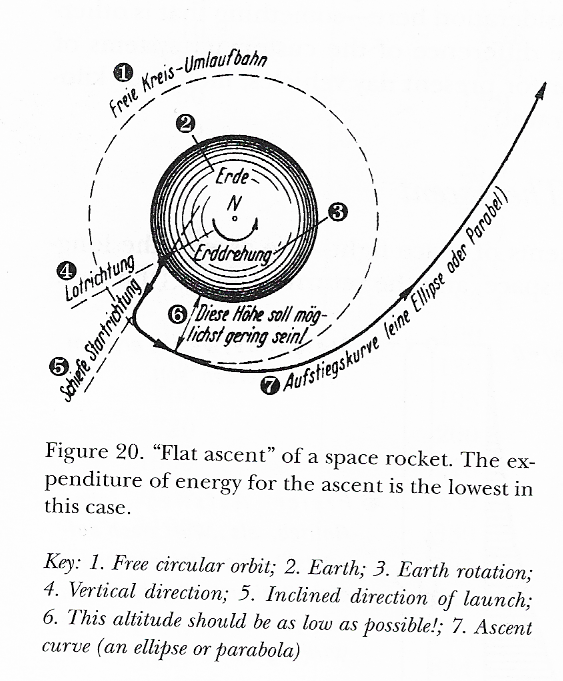
Noordung shows how to understand geosynchronous orbits:
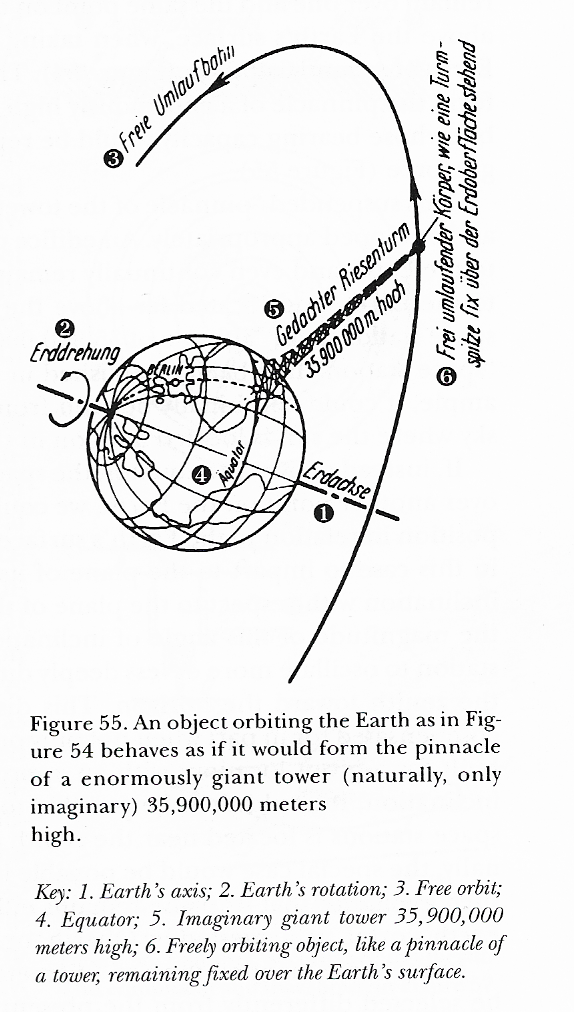
35,900,000 meters is geosynchronous orbit. That’s a genuinely nifty perspective projection of the earth and an equatorial orbit. It’s hand drawn, the earth’s continents are suggested, rather than accurate. I’m amused that Noordung puts the station at the longitude of Berlin. Germany really had a lot of intellectual gravitas until World War 2.
Noordung is also really close to the space elevator science fiction idea with the “imaginary giant tower”. Too bad he died right after the book was published.
Noordung’s full space station had a “habitat wheel”, an observatory, and a “machine shop”, which was mostly a solar-heated turbine running a generator. In a departure from ordinary practice, the working fluid of the machine shop turbine is nitrogen. Noordung chose this because he thought the working fluid could be cooled to a very low temperature using radiation into free space, and any escape into living quarters would be harmless.
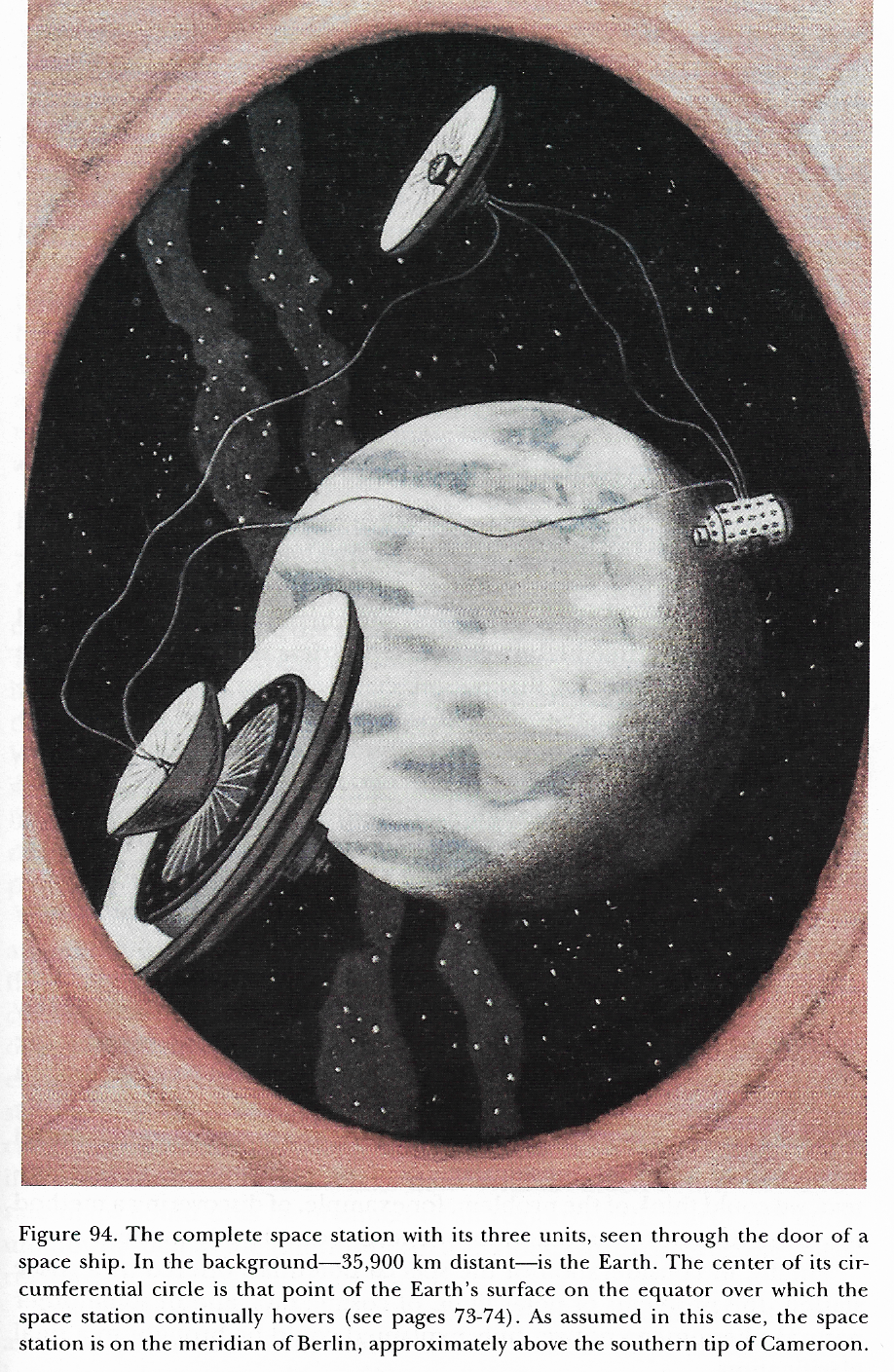
Influence on von Braun’s space station
Even though space exploration historians can’t find a connection between Noordung and von Braun, it’s hard not to see parallels between Noordung’s and von Braun’s space stations physically.
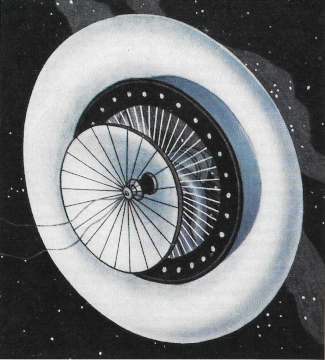
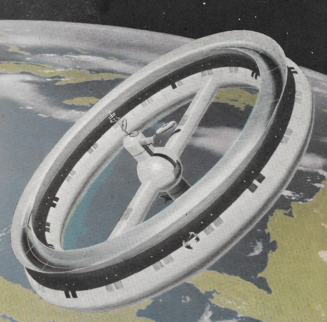
Noordung had the hub located by cable spokes, with a log-spiral staircase leading from wheel to hub.
Both Noordung and von Braun have a separate, free-floating, observatory. Von Braun’s is unmanned, he had the benefit of another 30 years of electronics and photography development.
| Noordung | von Braun | |
|---|---|---|
| Diameter | 98 feet | 250 feet |
| Rotational velocity | 7.5 rpm | 2.7 rpm |
| Control | reaction wheels, thrusters | rocket engine, fluid pumps/reservoirs |
| Cross sectional shape | cylindrical, torospherical caps | circular |
| Crew | 80 | |
| Orbit | circular equatorial | circular polar |
| Altitude | 22,300 miles | 1075 miles |
| Turbine fluid | nitrogen | mercury |
Focusing solar rays and frying your enemies
Atomic bombs were still at least 15 years in the future when The Problem of Space Travel was written, so Noordung’s space station can’t rain atomic terror at will. Noordung does propose that large mirrors reflecting and focusing the Sun’s rays on the earth would char troops, melt tanks, trains and train tracks, factories, and even ships. It would be the “Most Dreadful Weapon”.
… a power would hardly dare to start a war with a country that controls weapons of this dreadful nature.
I judge that Noordung didn’t have any influence on von Braun’s space station. These look like two competing preliminary design studies, rather than a series of two studies, one refining the other.
